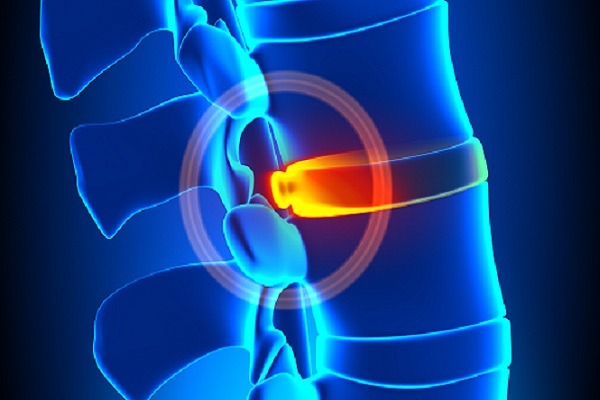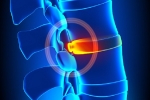
Degenerative disc disease is one of the most common causes of low back and neck pain, and also one of the most misunderstood.
Simply put, degenerative disc disease refers to symptoms of back or neck pain caused by wear-and-tear on a spinal disc. In some cases, degenerative disc disease also causes weakness, numbness, and hot, shooting pains in the arms or legs (radicular pain). Degenerative disc disease typically consists of a low-level chronic pain with intermittent episodes of more severe pain.
Painful disc degeneration is common in the neck (cervical spine) and lower back (lumbar spine). These areas of the spine undergo the most motion and stress and are most susceptible to disc degeneration.
Degenerative Disc Disease is a Misnomer
The term degenerative understandably implies that symptoms will get worse with age. However, the term does not refer to the symptoms but rather describes the process of the disc degenerating over time.
Despite what the name suggests, degenerative disc disease is not a disease, but a condition in which natural, age-related wear-and-tear on a disc causes pain, instability, and other symptoms. This condition usually does not result in long-term disability, and most cases can be managed using non-surgical treatment methods.
While it is true that disc degeneration is likely to progress over time, the pain from degenerative disc disease usually does not get worse and in fact usually feels better given enough time. The degenerative cascade degenerative cascade theory explains how this process works.
Disc degeneration is a natural part of aging, and over time everybody will exhibit some changes in their discs. However, a degenerating disc does not always cause symptoms to develop. In fact, degenerative disc disease is quite variable in its nature and severity.
This article provides in-depth information about aspects of degenerative disc disease based on commonly accepted principles, such as how a degenerated disc causes pain and common symptoms and treatments.
Medical Practitioners Disagree
There is little consensus in the medical literature regarding what does and does not constitute a diagnosis of degenerative disc disease. This lack of agreement may be attributable to the condition’s nature of causing symptoms off and on over the span of many years, making symptoms difficult to track.
It is important to note that disc degeneration can lead to or hasten the onset of additional spinal conditions, such as:
- Spinal stenosis, a form of spinal degeneration that leads to nerve root or spinal cord pinching.
- Osteoarthritis in the spine in the spine changes in the facet joints at the back of the spine that occur as a result of degeneration.
- Spondylolisthesis, in which one vertebral body slips forward on another due to facet joint degeneration.
- Scoliosis, where discs degenerate in a lopsided fashion and a ‘curve’ can develop over time.
To arrange an appointment with our Pain Management Specialist, Dr. Jeffrey Chacko, please contact our office at (516) 419-4480 or (718) 215-1888.













